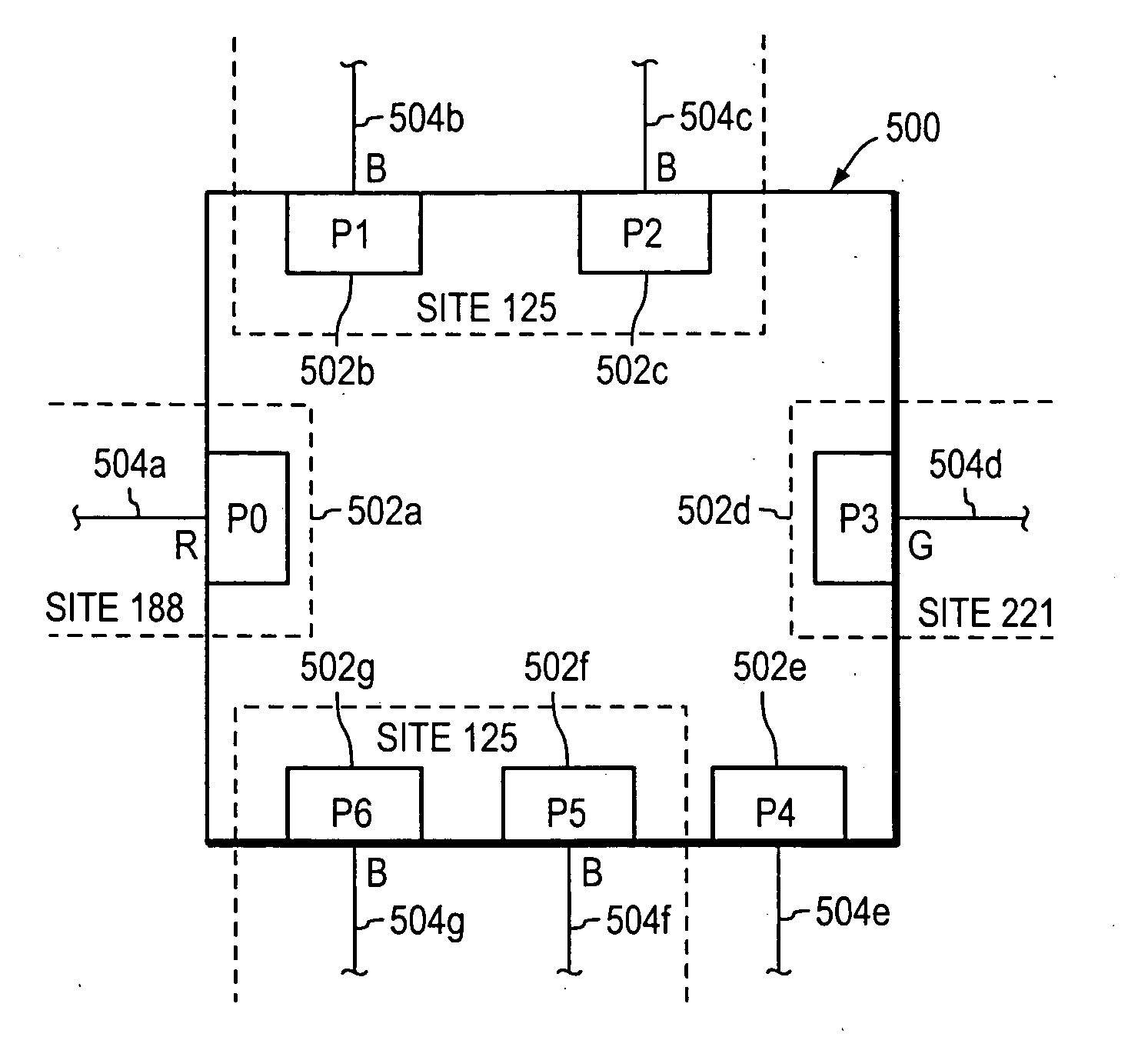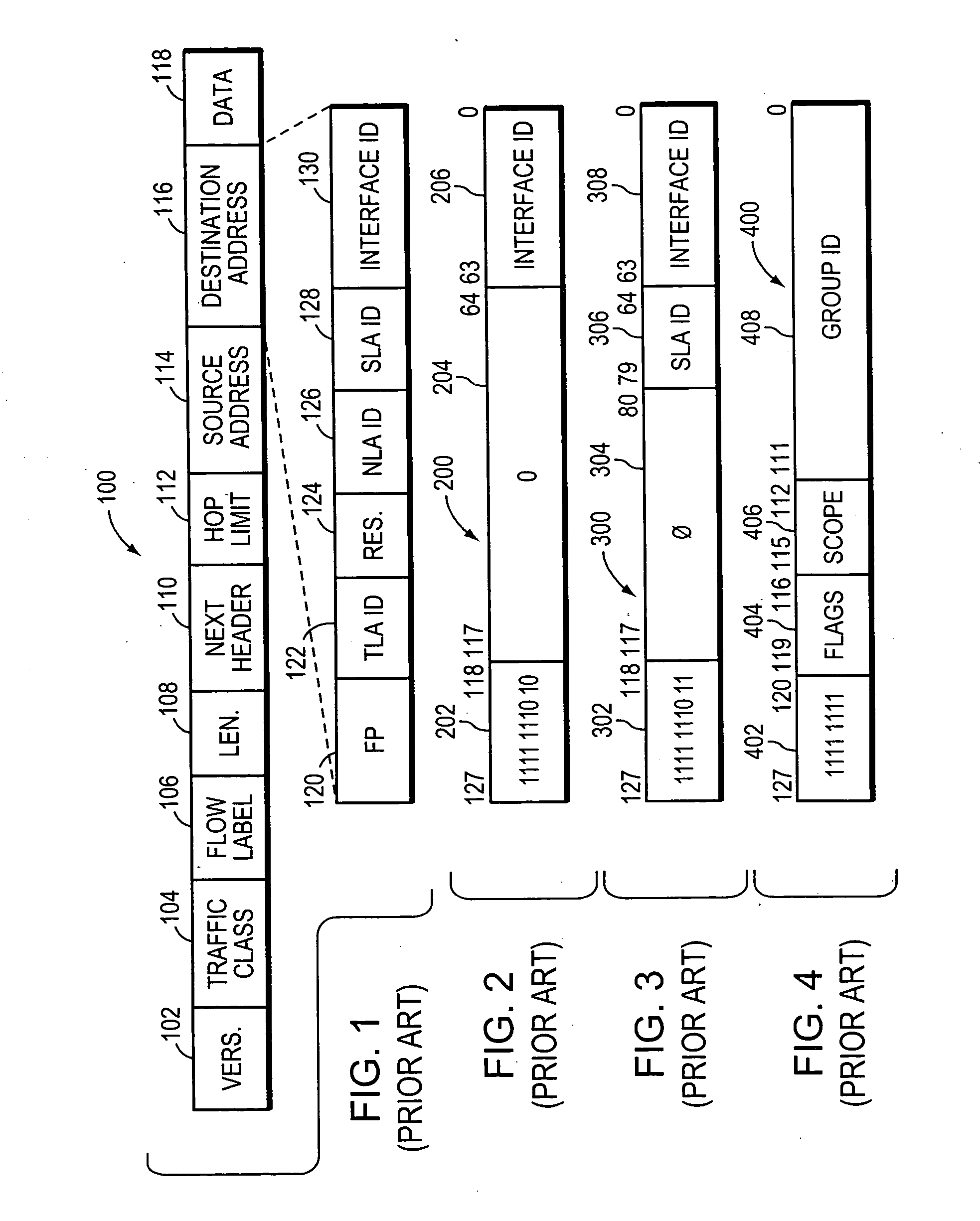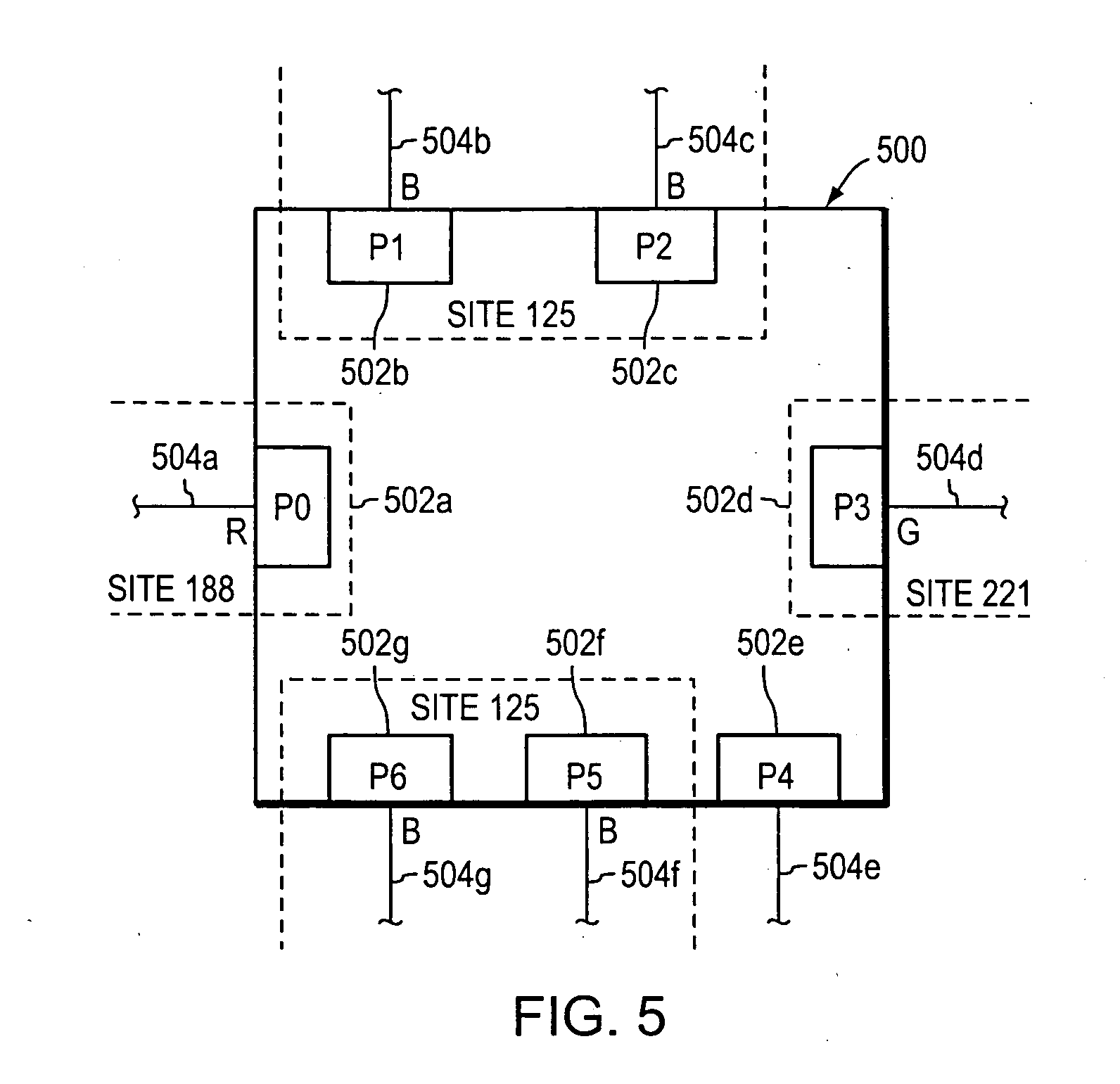System and method for deriving IPv6 scope identifiers and for mapping the identifiers into IPv6 addresses
a technology of scope identifiers and mapping methods, applied in the field of computer networks, can solve the problems of imposing complexities, limited number of available addresses, and significant complexity for all, and achieve the effect of high speed and efficient processing
- Summary
- Abstract
- Description
- Claims
- Application Information
AI Technical Summary
Benefits of technology
Problems solved by technology
Method used
Image
Examples
Embodiment Construction
[0039]FIG. 5 is a highly schematic illustration of an intermediate network device 500 in accordance with the present invention. Device 500 includes a plurality of interfaces or ports 502a-g from which network messages can be received and forwarded. Each port, moreover, may be identified by a corresponding port identifier, e.g., P0-P6. Coupled to each port 502a-g is a respective link 504a-g. As described herein, device 500 is configured to forward network messages, e.g., packets and / or frames, originated by a source entity and received by the device 500 on a first port, e.g., P1, onto a second port, e.g., P5 for receipt by a destination entity.
[0040] Device 500 is preferably disposed within a computer network (not shown), and each port or interface of device 500 may be associated with one or more Virtual Local Area Network (VLAN) designations or identifiers (IDs) defined within the network. For example, port 502a or P0, which is an access port, is associated with the red (R) VLAN ID...
PUM
 Login to View More
Login to View More Abstract
Description
Claims
Application Information
 Login to View More
Login to View More - R&D
- Intellectual Property
- Life Sciences
- Materials
- Tech Scout
- Unparalleled Data Quality
- Higher Quality Content
- 60% Fewer Hallucinations
Browse by: Latest US Patents, China's latest patents, Technical Efficacy Thesaurus, Application Domain, Technology Topic, Popular Technical Reports.
© 2025 PatSnap. All rights reserved.Legal|Privacy policy|Modern Slavery Act Transparency Statement|Sitemap|About US| Contact US: help@patsnap.com



